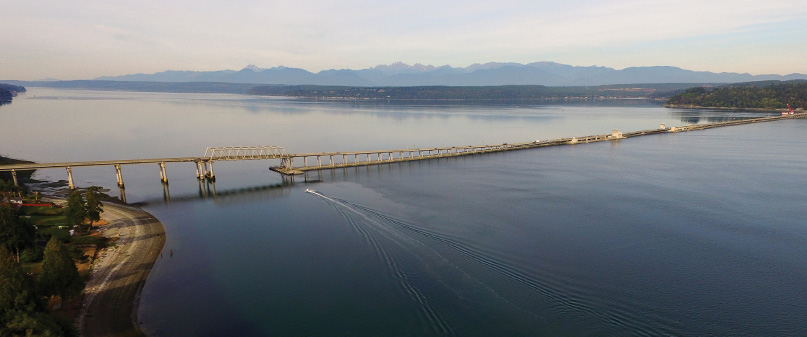
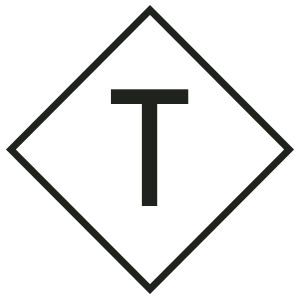 The Olympic Peninsula—and by proxy its eastern fjord border of the Hood Canal—may be the most unapologetically wyrd place in the universe. Note the Old English spelling reminiscent of the Wyrd Sisters of Shakespeare’s Macbeth, witches who would live happily in the Peninsula’s brooding, moss carpeted forests. Culturally, this corner of Washington is hanging onto reality by a thread and physically only by the world’s longest saltwater floating bridge and a narrow land base.
The Olympic Peninsula—and by proxy its eastern fjord border of the Hood Canal—may be the most unapologetically wyrd place in the universe. Note the Old English spelling reminiscent of the Wyrd Sisters of Shakespeare’s Macbeth, witches who would live happily in the Peninsula’s brooding, moss carpeted forests. Culturally, this corner of Washington is hanging onto reality by a thread and physically only by the world’s longest saltwater floating bridge and a narrow land base.
It’s the land of the vampires and werewolves from the Twilight series, where sci-fi giant Frank Herbert of the Dune series lived out his last days, and where local literary legend Tom Robbins set his breakout novel Another Roadside Attraction in which Peninsula hippies and their pet baboon happen upon the body of Jesus and make a sideshow of it while on the run from the Vatican. Cruise down the Hood Canal and you can pull a $100 oyster feast right out of the muck and watch a nuclear submarine cruise past. You can’t really do that anywhere else that I know of. Explore the Peninsula enough and one feels like it yearns to break free, not just of the continent but maybe the limitations of mainstream Earth itself.
It’s hard not to have your mind loosened a bit from “normal” while out on the Big Hook. For boaters, this piece complements a previous Ports of Call (Hood Canal: Beyond the Bend, September 2017 issue). Here we explore the northern entrance at the record-holding Bugge Bridge (Hood Canal Floating Bridge) to Pleasant Harbor. Boaters of all stripes will enjoy deep waters, nooks and crannies that only the locals have mastered, and some backyard wilderness that’s both far away and right next door. I recommend taking your trusty bike aboard, for Hood Canal marinas tend to be a mile or two away from the nearest town. This is also a great playground for those who like to live off the fat of the land, with plenty of angling and harvesting opportunities. And that epic Olympic Mountain range setting!
STAY AWHILE
HOOD CANAL HIGHLIGHTS
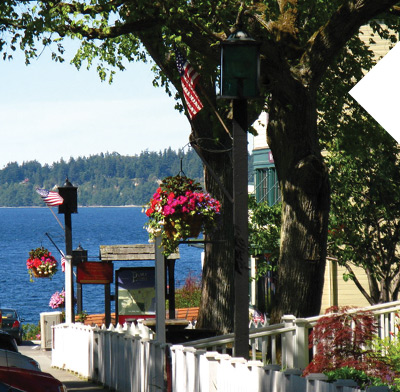
|
Take a GambleWhile technically “above” the floating bridge, adorable dot-on-the-map Port Gamble is a worthy mention. Nestled at the mouth of the sheltered harbor of the same name, Port Gamble is a historic hamlet that blends equal parts cozy boutique strip, historic coastal Washington sawmill town (complete with museum), and indoor and outdoor event venues. This concoction guarantees that a wedding will probably be taking place whenever you visit, the stunning backdrop providing the icing on the nuptial cake. Everything about Port Gamble makes the town an ideal boat-friendly gem except one critical detail: boat access. The closest we get to a marina is a public floating dock at the Salsbury Point Park, a mile or so walk or bike to the west, operating from April to October. The alternative way to visit Port Gamble by boat is probably to anchor within the sheltered confines of the bay itself and dinghy or paddle in. Bust out a chart, and you’ll see that the bay has a nice muddy bottom and a max depth in the 60-something-feet range. It’s probably best to land the dinghy on the south side of the breakwater west of the channel entrance to Port Gamble Harbor near the rack of rental kayaks, otherwise you risk being on the wrong side of a chain-link fence (and perhaps local regulation). Mind the sounder, for there’s plenty of shallow mud flats to get ye. (Photo: by Jasperdo/Flickr) |
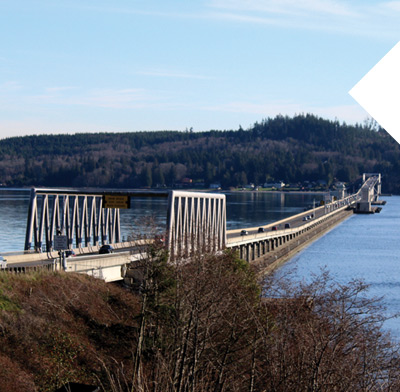
|
Float the BoatThe iconic William A. Bugge Bridge (known by most as the Hood Canal Floating Bridge) is an odd duck of engineering, fitting for the off-beat Peninsula feeling. The bridge connects the Olympic and Kitsap peninsulas via Route 104 and is the longest floating bridge located on a saltwater tidal basin in the world at nearly a mile and a half long (third longest floating bridge in the world overall). A journey across the bridge is a nautical bucket list item. If transiting through the bridge, you may want to consult the Washington State Department of Transportation website (wsdot.wa.gov) to satisfy those questions and check for announced closures, openings, and other curveballs that are common in a place through which the Navy regularly moves its most prized warships. Basically, you have to request an opening at least an hour ahead by calling (360) 799-3233 or hailing VHF channel 13. |
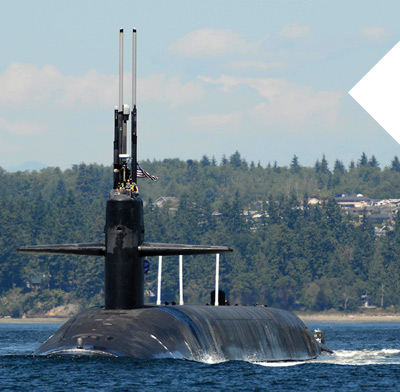
|
Bangor BaseSouth of the bridge, you’ll pass a relatively empty stretch of the Hood Canal. Probably the most head-turning feature is Bangor, specifically Naval Base Kitsap, on the east side. The third largest Navy base in the U.S., this military juggernaut is no joke—homeport for many nuclear submarines, housing for one of the U.S. Navy’s four nuclear shipyards, the only West Coast dry dock capable of handling Nimitz-class aircraft carriers, one of two strategic nuclear weapons facilities, and the Navy’s largest fuel depot. Give Bangor a wide berth and hang to the west when passing. Keep an eye out for escorted convoys and immediately dash out of their way if you see one. I was once at the helm of a small sailboat in Puget Sound when a convoy of a nuclear submarine and six-or-so U.S. Coast Guard Cutter escorts rounded a bend and plowed toward my direction. Rules of the road be damned! |
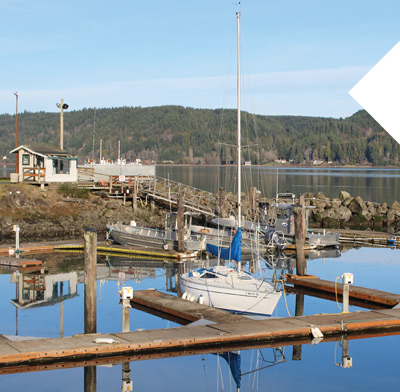
|
Bob into DabobOnce you’ve gone south enough to clear Bangor, you have the option to cruise northward into Dabob Bay and an offshoot, Quilcene Bay. You’re in Hood Canal proper now, ground-zero of the area’s famous shellfish farms like Taylor Shellfish Hatchery and Rock Point Oyster (both in Dabob Bay). One popular spot for boaters is Broad Spit, an awesome beach on the west side of Dabob Bay that can be only accessed by boat. This is a great place to put down anchor and have a picnic ashore. If you time it right and bring your gear, you can harvest wild clams and oysters right on the spot. Perfection! Dabob Bay Natural Area Preserve makes up the furthest northern tip of the bay. While scenic, it is largely a collection of mudflats and sandspits that offer both recreation and opportunities to run aground. Float into Quilcene Bay and you’ll find more shellfish farms, hidden coves for exploration, and the tiny Herb Beck Marina complete with beach and swimming area. Not only is the marina a good option for a refuel and overnight moorage, but it is the only way for boaters to access the town of Quilcene, which is buffered from closer access by an estuarine wetland. The almost two-mile schlep into the funky, off-the-beaten-track town may be a worthy adventure with groceries (Peninsula Food Store), a few bars, and eats. A Quilcene visit will get you in that Peninsula mindset real quick. |
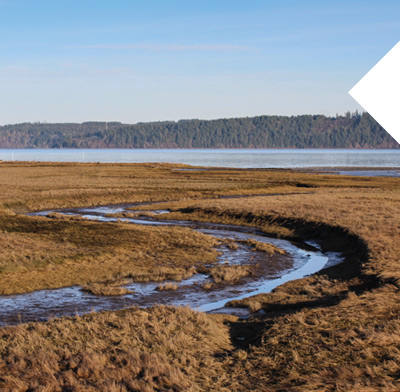
|
Brinnon and DosewallipsBoaters who pass the entrance to Dabob will find a cluster of interesting attractions to the west. It is only here that the singular Olympic National Park—one of my favorite places in the world—touches the waters of Hood Canal at Seal Rock. Farther south, Dosewallips State Park protects the Dosewallips River as it exits the majestic Olympic Mountains and enters the fjord. Sylopash Point and the Dosewallips Flats offer pristine walking trails and excellent shellfish harvesting just north of the one-street town of Brinnon. Access for boaters will have to be improvised, if possible at all—watch the mud! Just south of Brinnon, beautiful Pleasant Harbor is the local mecca for boaters. There are some barebones docking options, with Pleasant Harbor State Park and moorage with all the fixings at the two full-service marinas: Home Port Marina in Pleasant Harbor and Pleasant Harbor Marina Resort. There’s not much to see outside of the marinas, so bikes will be useful for those who do want to check out the Dosewallips River and Brinnon to the north. |
HOOD CANAL: BELOW THE BRIDGE
GASTRONOMY
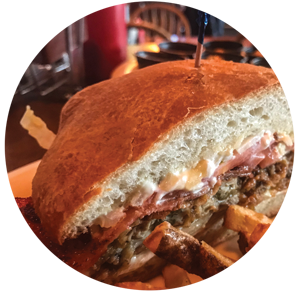
Arguably the best food available is from nature’s pantry all around you: crabs and prawns straight from your pots, freshly dug clams and oysters, and salmon and ling cod reeled in minutes ago. Make sure you’re in compliance with Washington Department of Fish and Wildlife regulations and make a delicious memory or two.
If you yearn for that Peninsula, small-town experience, you’ll want that aforementioned bike aboard. The strengths of the local cuisine are those mom and pop places that embrace the excellent local ingredients. The towns of Port Gamble, Quilcene, and Brinnon have the most offerings. For Port Gamble, the cozy eats of the Port Gamble General Store (a restaurant), the Butcher & Baker Provisions, and Gamble Bay Coffee are recommendations. Note that you’ll be walking or biking from the Salsbury Point Park or strolling up from your dinghy beached on the tidelands. Quilcene is almost two miles from the Herb Beck Marina and that bike will come in handy. There are a few bars, like the 101 Brewery at Twana Road House, and hyper local restaurants like the Gear Head Deli and Logger’s Landing.
If spending the night at Pleasant Harbor, you’ll likely dine at the Galley & Pub restaurant in the Pleasant Harbor Marina Resort. From Pleasant Harbor, you are a couple of miles from Brinnon. Brinnon itself doesn’t have much to offer save a charming American-style restaurant, Geoduck, south of the Dosewallips River mouth. It’s the kind of place with a jukebox in the corner and elk heads on the wall. I went all out with their “Ty One On” Oyster Sandwich ($15.25) with eight local oyster shooters ($12.50) and a pint of Octopus IPA from Narrows Brewing (Tacoma, WA).


